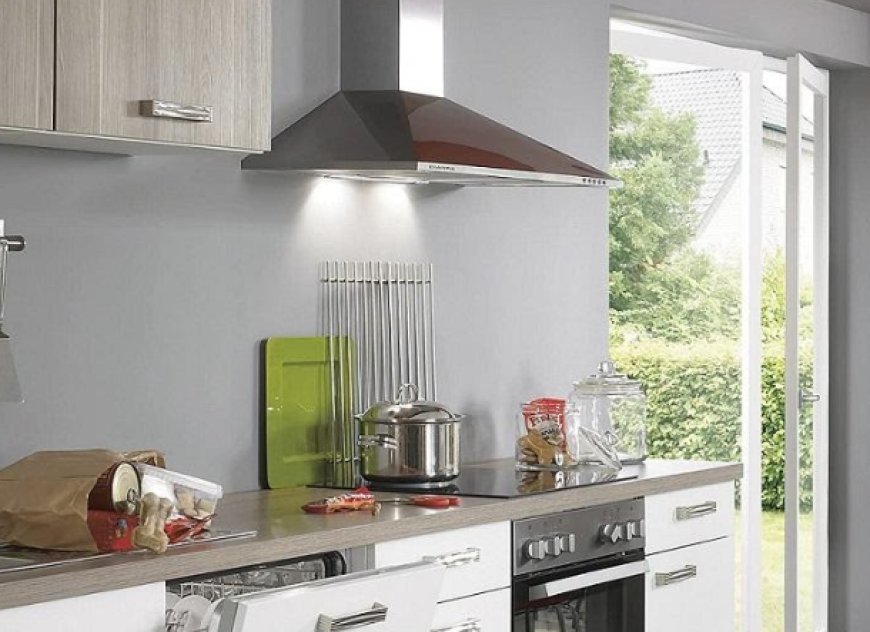Induction Hob for Beginners: A Smooth Start to Modern Cooking

Stepping into the world of induction hobs can feel like a leap into the future of cooking. For beginners, the technology might seem intimidating, but beneath the sleek glass-ceramic surface lies an incredibly intuitive, efficient, and safe way to prepare meals. If you've just acquired an induction hob or are considering one, this article is your friendly guide to getting started, demystifying its working principle, highlighting key benefits, addressing common initial questions, and providing essential tips to ensure a smooth and enjoyable transition to modern cooking.
At the heart of every induction hob is a fascinating working principle: electromagnetic induction. Unlike gas flames that visibly heat a pan or electric coils that glow red, an induction hob generates heat directly within the base of your cookware.1 For beginners, understanding this is crucial. Beneath each cooking zone are induction coils.2 When the hob is switched on and a suitable pot or pan is placed on it, an invisible magnetic field is created. This field doesn't heat the hob's surface; instead, it induces tiny electrical currents, called eddy currents, in the ferromagnetic (magnetic) base of your pan.3 It's the resistance of the pan's metal to these currents that instantly converts into heat, cooking your food. The hob itself only warms slightly from the residual heat transferred back from the hot pan. This direct heating is why induction hobs are so incredibly fast and energy efficient.
Why an Induction Hob is Great for Beginners:
Many aspects of induction hobs make them particularly welcoming for those new to this technology:
-
Safety First: For beginners, safety is a paramount concern. Induction hobs are inherently safer than other types of cooktops.4 There's no open flame like gas, eliminating the risk of burns from accidental contact with a fire.5 The hob surface itself doesn't get intensely hot, reducing the risk of accidental burns (though it will warm from the pan).6 Crucially, automatic pan detection means the hob only activates when a compatible pan is on it, and automatic shut-off features turn off the heat if a pan is removed or boils dry.7 This significantly lowers the chances of kitchen accidents.
-
Easy Cleaning: Spills and boil-overs are common for beginners. With an induction hob, the surface remains relatively cool. This means food spills don't bake onto the glass-ceramic surface, making cleaning induction hobs remarkably simple.8 A quick wipe with a damp cloth is often all that's needed, saving time and effort on scrubbing.
-
Speed and Efficiency: While learning to cook can be time-consuming, induction hobs drastically cut down on heating times.9 Water boils in minutes, and pans heat up almost instantly. This speed is a huge benefit for beginners looking to prepare quick meals and not spend hours waiting for water to boil or oil to heat.
-
Precise Control: Often surprising for, induction hobs beginners offer incredibly precise temperature control.10 Adjustments are immediate turn the heat up, and the pan gets hotter instantly; turn it down, and it cools instantly. This level of precision makes it easier to prevent scorching, gently simmer sauces, or achieve perfect browning without overcooking.11
Essential Tips for Beginners with an Induction Hob:
To ensure a smooth transition and get the most out of your new appliance, here are some key tips for beginners:
-
Check Your Cookware: This is the most important initial step. Your existing pots and pans must be induction-compatible. The easiest way to check is the magnet test: if a magnet sticks firmly to the bottom of your pan, it will work on induction. If not, you'll need new ferromagnetic cookware. Don't worry, a wide range of affordable induction-compatible pans are available in Lahore and globally.
-
Start with Lower Power Settings: Induction hobs heat very quickly.12 As a beginner, it's wise to start with lower power settings than you might initially think, especially for tasks you're used to doing on gas or electric. Gradually increase the power until you find the perfect level. You'll be surprised at how much less heat is often needed.
-
Learn the Power Levels: Familiarize yourself with the numbered power settings (e.g., 1-9 or 1-14). Lower numbers are for gentle simmering, melting, or keeping warm. Mid-range is for general frying and sauting. Higher numbers and the Boost Function (often marked "P" or "Boost") are for rapid boiling or high-heat searing.13
-
Use Flat-Bottomed Pans: For optimal efficiency and even heating, ensure your induction hob cookware has a perfectly flat bottom. Warped pans won't make good contact with the hob's magnetic field, leading to slower, uneven heating.
-
Listen to Your Hob (and Pan): It's normal for induction hobs to make a slight humming or buzzing sound, especially at higher power settings or with certain pans.14 This is due to the pan's magnetic properties vibrating. You might also hear a fan noise, which is the hob's internal cooling system.15 These are not faults.
-
Keep it Clean: Get into the habit of wiping down the hob's glass-ceramic surface after each use, once it has completely cooled. This prevents spills from drying and hardening, making long-term induction hob maintenance much easier. Use a soft cloth and mild detergent.
-
Read Your Manual: Your induction hob's user manual is your best friend. It will contain specific instructions for your model's features, safety warnings, and troubleshooting tips.
For beginners, embracing an induction hob opens up a world of culinary possibilities, making cooking less of a chore and more of a joy. Its inherent safety, remarkable speed, intuitive precision, and straightforward cleaning make it an ideal choice for anyone embarking on their modern cooking journey. With a little practice and these basic tips, you'll soon be cooking with confidence and enjoying all the benefits your new induction hob has to offer.



































